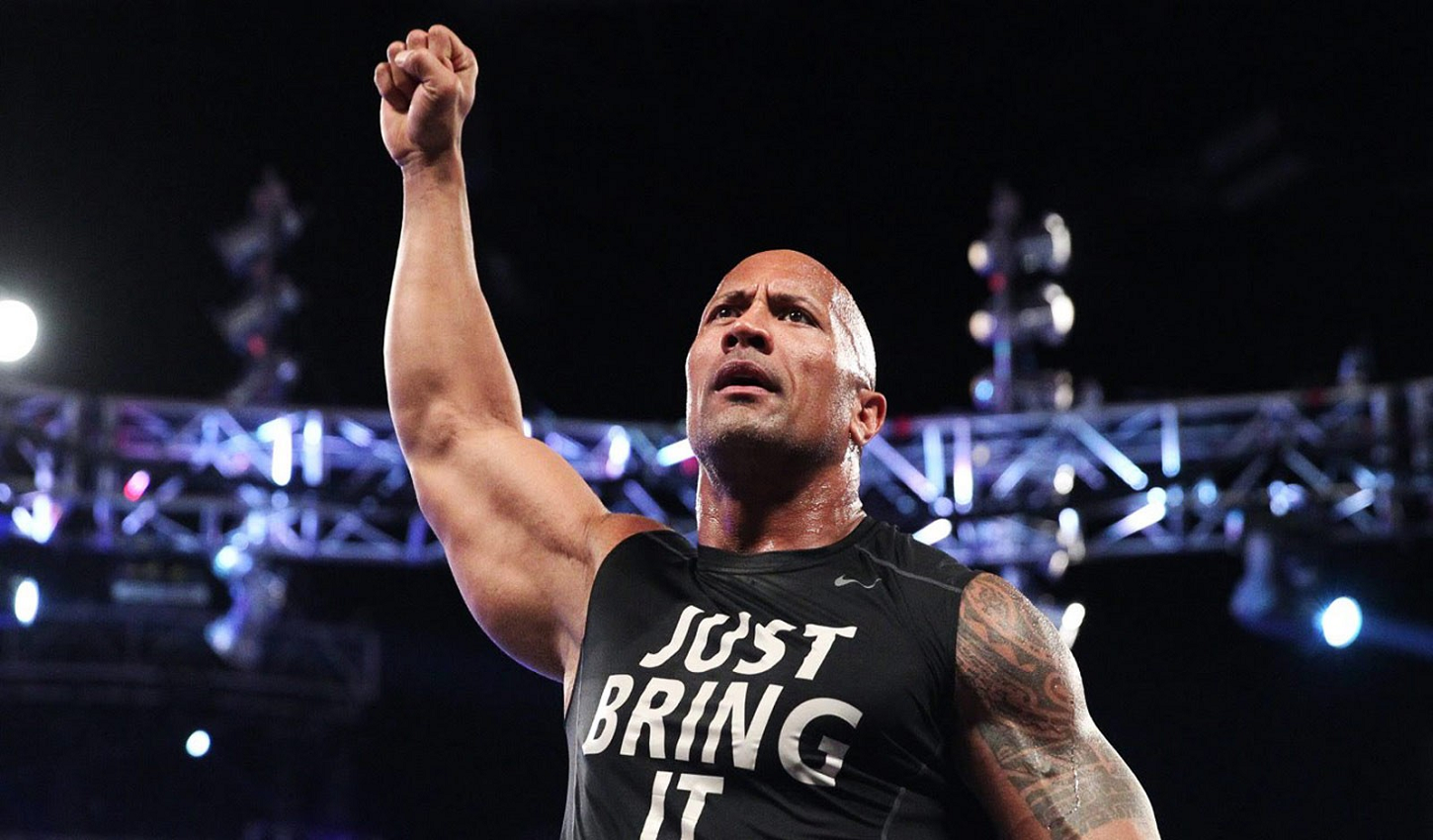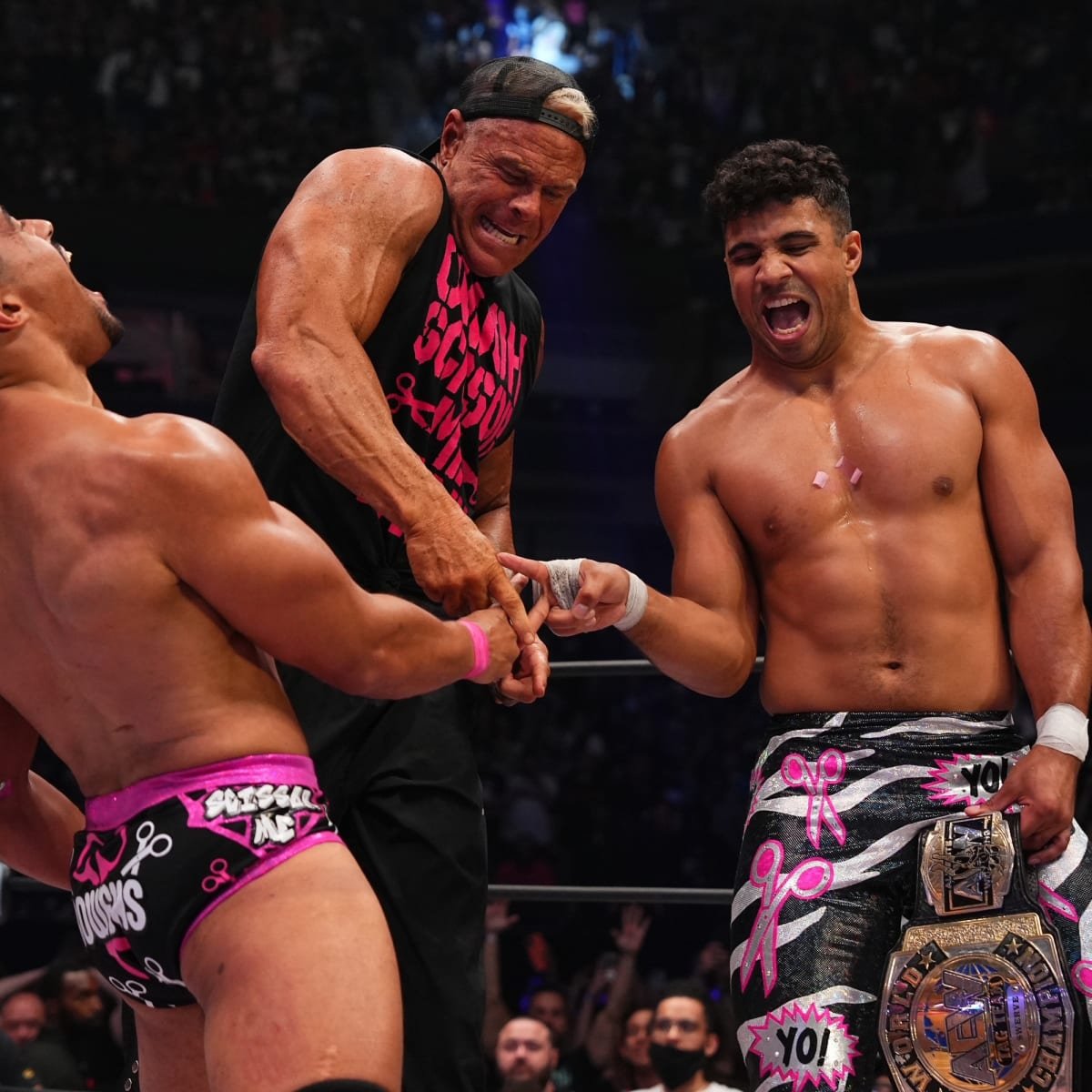The Importance Of Poses And Gestures In Professional Wrestling
The Rock posing on the turnbuckle.
Much, if not all, of pro-wrestling’s artistry is meant to contribute to a wrestler’s identity. Their entrance music, body language, move-set, catchphrases, and look all coalesce into a character. Neglect one aspect of characterization and the rest may suffer. For a wrestler to really resonate in the minds of the audience, they must have a completely drawn identity that is consistent across every tool in the wrestler’s tool box. Their music, for example, should sound like it comes directly from that wrestling character’s soul. Their attire should reflect the character’s tone. Their phraseology should be consistent with the character’s aesthetic. Their moves should represent a fighting style that character would actually use.
There are other less obvious ways a wrestler tells their story, though.
For this article, I’d like to focus on what I believe to be the under-appreciated aspects of professional wrestling performance art: the pose and the gesture.
First, what is ‘the pose’?
The pose is when a pro-wrestler, usually during their entrance but occasionally during a match, will become stationary with their limbs positioned in a specific direction. They hold this position just long enough for it to sink into the audience’s consciousness.
During an entrance, a pose is held so that pictures might be taken of the wrestler in their full, confident glory - think The Rock leaning on the turnbuckle, single arm raised. During a match, a pose might signal that a particular move is coming - think Roman Reigns’ “Ewweeaahh!” before hitting his spear. Whether before, after, or during a match, an effective pose communicates something essential about a character the same way descriptive writing creates an image in the reader’s mind.
Are they an evil character, untrustworthy, or conniving? Are they benevolent, confident, or upstanding?
What does all of that look like in a pose?
The answer to that question is where a character flourishes. To wordlessly tell your character’s story, using the body as the medium of expression, is a powerful tool. Fans, once they associate a particular pose with a wrestler, will mimic it, creating a kind of collective consciousness around one wrestler. The synergy between fan and performer is a transformative experience. The fan retains a small amount of ownership over the character as they mirror the pose. The identity of that wrestler, in that moment, becomes their identity.
Roman. Reigns before the spear.
When crafting a pro-wrestling character it’s best if these tools are used organically rather than in a contrived way.
It’s entirely possible for a wrestler to construct their name, attire, catchphrases, move-sets, poses, and gestures and for them all to be thematically in sync, but then for none of it to resonate with audiences. That’s because fans can perceive when a wrestler has been manufactured. That’s the potential pitfall of knowing the tools of the trade - you can overthink and overproduce a character. For a wrestler to be truly successful, the audience must feel like they’ve participated in the creative process. The audience must interpret what a wrestler shows them. If some aspect of their character is told to the audience, the communication (and the fun of it all) starts to break down.
Next, what is ‘the gesture’?
The Rock, Just Bring It
If a pose is directed toward the crowd, then a gesture is directed toward an opponent.
The crowd can perform this gesture too (in fact, it often does) but within the context of the story being told in the wrestling ring, a gesture represents a symbolic exchange between the wrestlers, or communication about the status of a wrestler’s position in the match.
Think The Rock’s ‘Just Bring It’ hand motion, calling his opponent towards him.
Think Roman Reigns’ cocking his forearm like a shotgun before delivering The Superman Punch.
These gestures come to represent some aspect of the character’s makeup. In The Rock’s case, he is confident, fearless, and charismatic. In Roman’s case he is strong, ready, and capable. Both gestures communicate a lot about the characters’ mental and emotional status. The audience, recognizing these gestures, eagerly anticipates what’s about to happen next. This represents the power of pattern recognition in professional wrestling. Watch enough of it, you start to learn what gestures mean, particularly as they relate to the beginning, middle, and end of a match.
A well-place gesture breaks up the action and avoids monotony. If a match was nothing but a sequence of moves strung together without interruption it would be pretty boring. Poses and gestures allow for contrast in a match, for the performance to ebb and flow in a way that keeps it interesting and exciting.
An affective gesture will contain the history of a character or group.
Take DX, for example. From now until the end of time, Triple H and Shawn Michaels will be synonymous with the “Suck it!” gesture. And whenever this gesture is performed by a present-day wrestler it’s an homage to Triple H and Michaels. The crowd, recognizing the gesture, is taken on a quick detour down memory lane and they’re flooded with fond feelings. That’s how much these gestures mean to pro-wrestling fans. They are a part of not just an individual wrestler’s story, but the story of all professional wrestling. These gestures hold within them every pop they ever elicited and the immediate promise of the next.
Shawn Michaels and Triple H.
Because poses and gestures are subtler aspects of pro-wrestling performance art it’s easy to overlook how important and useful they are. In some cases, a striking pose and a simple gesture are more important than a wrestler’s promo or move-set.
Consider The Undertaker, a character brought to life mostly through body language: his long, lonely walk down the ramp, raising his arms to raise the lights, slowly taking his hat off, his eyes rolled into the back of his head, a single arm raised high in victory. Without these haunting poses and gestures, there is no Undertaker. While his sequence of moves are important in articulating the character, they represent a surprisingly small percentage of the character’s story.
He endures in the fans’ minds because of his body, and what he does with it when not wrestling.
The Undertaker enters the ring.
Most recently, the AEW tag team The Acclaimed have “gotten over” (become popular) due in large part to a ‘scissoring’ gesture they perform with Billy Gunn. Before interlocking the space between index and middle fingers, they shout, “Scissor me, Daddy Ass!” and the crowd goes wild for it. Somehow, with this outlandish phrase and delightfully lewd gesture, they’ve tapped into the fan-consciousness. Without ‘scissoring’ there is no Acclaimed. This is the briefest part of their act and yet it’s the most resonant. They’re very creative, rapping before each match, and they’re also quite good in the ring. But it’s ‘scissoring’ that’s gotten them where they are. The success of ‘scissoring’ speaks to the importance of authentic, original forms of self-expression in professional wrestling, the value of fearlessness and a willingness to be a little bit odd.
While these are all examples of poses and gestures that work, what does it look like when they don’t work?
One of the most common failings is for a wrestler to have too many poses and too many gestures during an entrance. Rather than focus on one simple, visual representation of their character they attempt to do all of the possible poses and gestures and the result is a muddled mess.
Sometimes pro-wrestlers will strike a pose right before performing a move and it breaks the immersion of the performance. Why would a competitor, moments from victory, stop what they were doing to strike a pose and then hit their move? And this leads me to one of the rarely examined aspects of pro-wrestling performance.
Is the wrestler striking a pose or performing a gesture because that’s something their character would do, or are they striking a pose or performing a gesture because that’s just what wrestlers do? If the answer is the former then the pose or gesture will resonate on a deeper level. If the answer is the latter it will be hackneyed and appear forced.
I won’t name names because that wouldn’t be constructive, but there are several wrestlers on television today who perform poses and gestures in rote, hit your mark fashion, and it’s holding them back.
When critics talk about needing the “intangibles” this is what they’re talking about. A wrestler has to be authentically whole, not prescribed. '
To be clear, it’s not necessarily the wrestler’s fault, especially if they’re younger. They’ve been told to hit their mark, work to “hard cam”, and the like. If raised in a prescriptive system you’re going to have a prescriptive performance.
It behooves wrestlers to observe the work of their peers and then do everything they can to deviate from it. Notice how, for example, many high flyers, during their entrance, will launch themselves over the top rope and land in the middle of the ring in a video game pose. If you, also a high flyer, want to stand out…don’t do that.
Walk to the ring calmly, saving your feats of athleticism for the match itself. That’s just one small example of how differentiating one’s approach can be beneficial.
Kenny Omega of AEW.
Poses and gestures are pivotal tools professional wrestlers use to connect with their audience. The right pose or gesture goes a long way in cementing a wrestler’s identity in that fan’s mind. They are a bridge between moments, carrying a character from the entrance ramp, into the ring, through the match, and to the celebration afterward. In examining the importance of poses and gestures we see how important they are, representing an unspoken connective tissue of a wrestler’s performance. To find the right pose or gesture, one must look within, find the truth of their character and work from that honest place.
There a wrestler might find the success they’re looking for.
Thank you for reading. If you enjoyed this article check out some others. You should also subscribe to my podcast The Work Of Wrestling (available wherever you get your pods every Monday). If you’d like to support me subscribe to my Patreon and you’ll get two exclusive podcasts every month. If you’re in need of a new wrestling tee-shirt visit my store at Pro-Wrestling Tees. Thank you again. May the Moment of Pop be with you!








